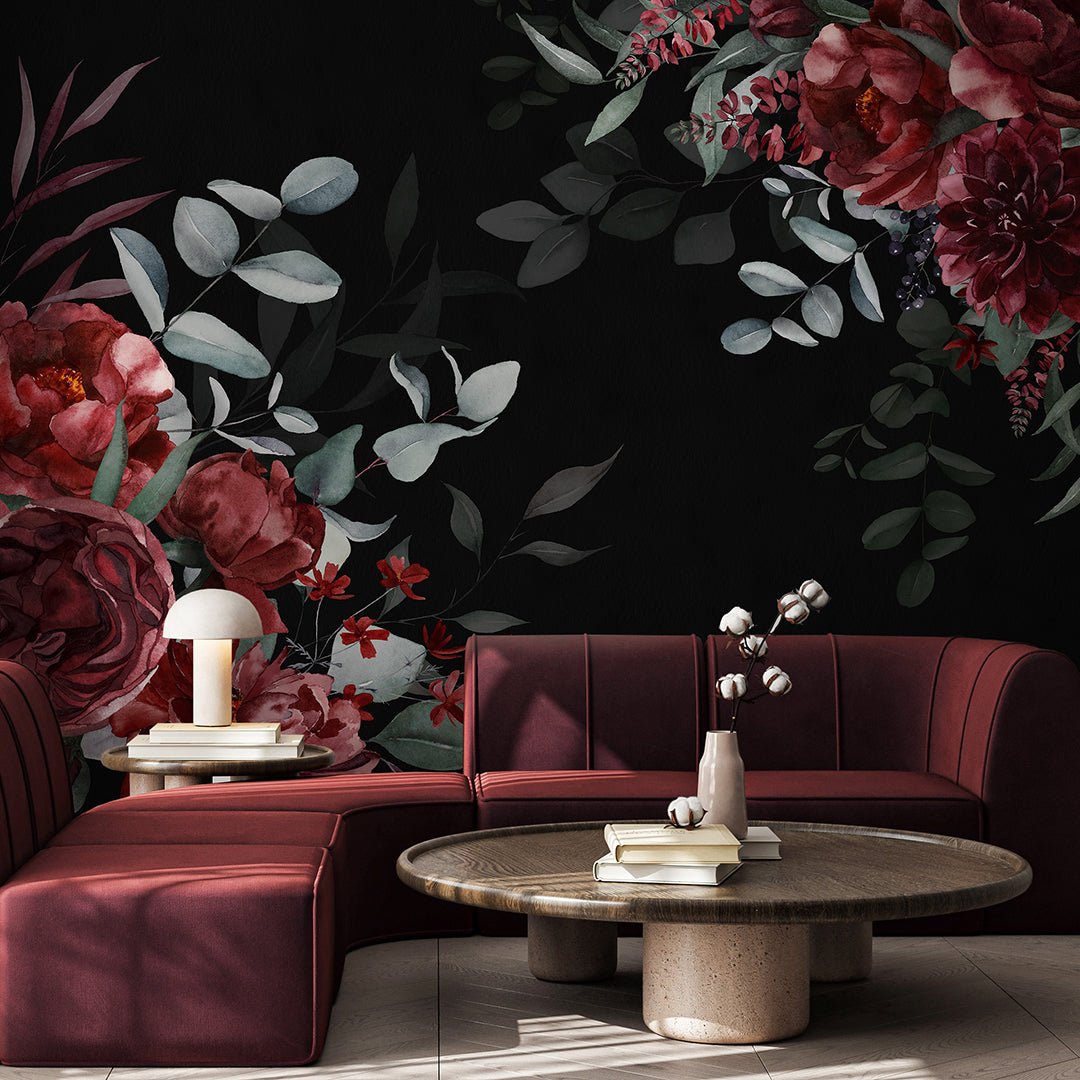It begins with a feeling. That quiet pull toward something richer, deeper, more dramatic. A space draped in charcoal, navy, forest green, or merlot — suddenly it feels less like a room and more like a moment. Moody wallpaper isn’t just décor; it’s an emotion on the wall. And increasingly, people are leaning into these shadowed palettes, not away from them.
Why Are People Attracted to Dark, Dramatic Tones?
Psychologically, deep colors evoke a sense of safety, depth, and introspection. In a fast-paced world full of screens and overstimulation, darker interiors help people create a more grounded and restful environment.
Studies in color psychology have shown that:
- Navy blue is associated with stability and calm.
- Charcoal gray promotes focus and neutrality.
- Olive green offers a connection to nature and reduces stress.
- Burgundy or plum brings richness and emotional warmth.
These tones work particularly well in personal spaces like bedrooms, home offices, and reading areas, where a calming and enveloping atmosphere is desired.
How Moody Wallpaper Enhances Emotional Design
While paint provides a flat wash of color, wallpaper adds dimension and interest. With moody wallpaper, the depth of color is often enhanced by textured patterns, soft gradients, or organic illustrations like florals or abstract brush strokes. This makes it easier to create a space that feels layered, thoughtful, and emotionally resonant.
Peel-and-stick wallpaper makes this style even more accessible, especially for renters or those experimenting with bold design choices. It's easy to apply, remove, or update as tastes evolve.
Dispelling Myths About Dark Interiors
A common belief is that dark walls make rooms feel smaller or oppressive. In reality, when used correctly, moody tones can:
- Make a space feel more intimate and luxurious
- Visually expand a room by blurring edges and corners
- Add sophistication and elegance to otherwise simple layouts
Key tips for balancing moody wallpaper:
- Use lighter accents (e.g., white trim, pale furniture) for contrast.
- Incorporate mirrors to reflect light.
- Choose warm lighting to maintain a cozy atmosphere.
- Add natural textures—wood, linen, rattan—for warmth and softness.

Where to Use Moody Wallpaper
Moody wallpaper isn’t limited to large living rooms or bedrooms. In fact, it works exceptionally well in:
- Entryways and hallways – Adds immediate character to transitional spaces.
- Powder rooms – Creates high impact in small areas.
- Dining rooms – Enhances drama and elegance for entertaining.
- Accent walls – Allows for bold expression without overwhelming the room.
Designers also recommend using dark wallpaper in rooms with plenty of natural light, where shadows and highlights can bring the patterns to life.

Is This a Trend or a Timeless Style?
Though moody interiors are trending on social media, the use of deep, rich tones in home design is not new. Historical homes, classic libraries, and vintage-inspired interiors have long featured dark woods, patterned wallpapers, and rich textiles. The modern interpretation is simply more versatile, often using peel-and-stick materials and updated color palettes.
The current popularity of moody design reflects a broader cultural shift: people are moving away from purely minimalist spaces toward interiors that are more personal, expressive, and emotionally resonant.Where to Find High-Quality Moody Wallpaper
For those ready to explore the moody interior style, wallpaper is one of the easiest and most effective ways to start. Whether you’re updating a bedroom, adding drama to a dining room, or refreshing a hallway, the right wallpaper can completely transform a space.
To find premium peel-and-stick moody wallpaper, check out the curated collection at CostaCover. Their designs combine rich tones with timeless patterns, making it easy to achieve a bold yet livable look in any room.





















